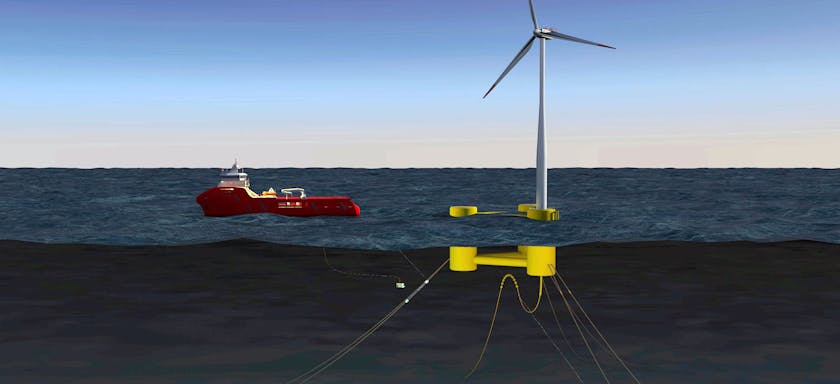Learnings from Strain Measurements on an In-Field Conductor and Wellhead System
EVENT: OMAE
1 Jun 2018
In recent years due to use of drilling risers with larger and heavier BOP/LMRP stacks, fatigue loading on subsea wellheads has increased, which poses potential restrictions on the duration of drilling operations. In order to track wellhead and conductor fatigue capacity consumption to support safe drilling operations a range of methods have been applied:
• Analytical riser model and measured environmental data;
• BOP motion measurement and transfer functions;
• Strain gauge data.
Strain gauge monitoring is considered the most accurate method for measuring fatigue capacity consumption. To compare the three approaches and establish recommendations for an optimal approach and method to establish fatigue accumulation of the wellhead, a monitoring data set is obtained on a well offshore West of Shetland. This paper presents an analysis of measured strain, motions and analytical predictions with the objective of better understanding the accuracy, limitations, or conservatism in each of the three methods defined above.
Of the various parameters that affect the accuracy of the fatigue damage estimates, the paper identifies that the selection of analytical conductor-soil model is critical to narrowing the gap between fatigue life predictions from the different approaches. The work presented here presents the influence of alternative approaches to model conductor-soil interaction than the traditionally used API soil model.
Overall, the paper presents the monitoring equipment and analytical methodology to advance the accuracy of wellhead fatigue damage measurements.
Authors

Alex Rimmer
Director, UK

About
Alex is a Chartered Engineer with a first-class master’s degree in mechanical engineering from the University of Bath and has been working for 2H Offshore since 2004. Alex has significant experience in the design and analysis of drilling and production systems for deepwater and shallow water developments, most notably as lead analysis engineer for BP’s Block 31 PSVM freestanding hybrid riser design project. Alex has taken on a number of managerial roles at 2H, including technical manager of the Norwich office, where he was responsible for integrating UWG’s shallow water riser and conductor engineering team and business into 2H. He has been a director in our London office since 2011.
Language
Insights
Rohit Shankaran
Principal Engineer
Rohit Shankaran
Principal Engineer
Insights
Alan Haig
Total








